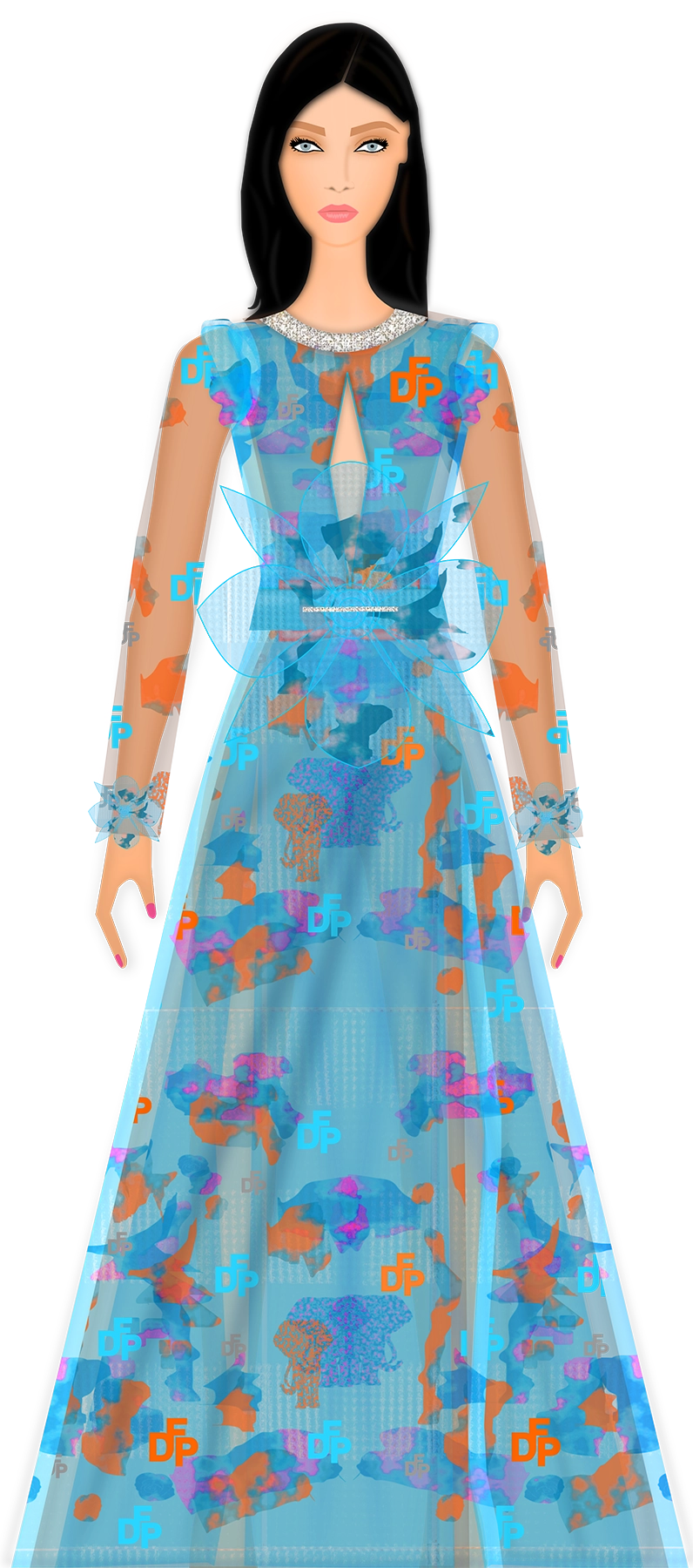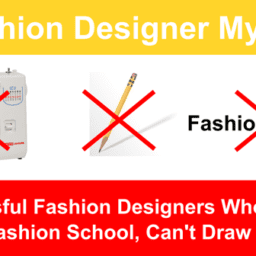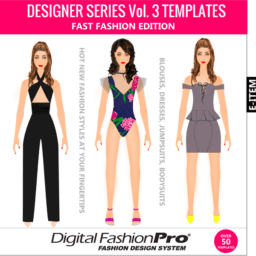how to design designer clothing
Designing designer clothing involves a combination of creativity, knowledge of fashion trends, attention to detail, and understanding of the target market. Designing designer clothing requires continuous learning, adaptability, and an understanding of your target market’s preferences. Stay true to your creative vision, strive for innovation, and always maintain quality standards to create a successful designer clothing line. Here’s a step-by-step guide on how to design your own designer clothing:
1. Research and Inspiration:
• Stay updated on current fashion trends by following fashion magazines, blogs, runway shows, and social media platforms.
• Study the work of established fashion designers for inspiration and to understand their design aesthetics.
• Research different fabrics, colors, patterns, and silhouettes to gain a deeper understanding of design possibilities.

• Determine the concept and inspiration behind your designer clothing line. Consider themes, moods, or narratives that you want to convey through your designs.
• Create a mood board or visual collage to gather images, colors, textures, and other elements that align with your vision.
3. Sketching and Concept Development:
• Start sketching your design ideas on paper or using digital design tools. Focus on silhouettes, proportions, and key details.
• Experiment with different combinations of fabrics, colors, and embellishments to bring your designs to life.
• Develop a range of designs that complement each other and can be part of a cohesive collection.
4. Fabric Selection:
• Choose fabrics that align with your design vision and the functionality of the garment. Consider factors such as drape, texture, and durability.
• Source fabric swatches from textile suppliers and assess their quality, feel, and color accuracy.
• Consider the cost and availability of fabrics, keeping in mind your target market and production requirements.
5. Technical Drawings and Pattern Making:
• Create technical drawings that provide detailed specifications for each design, including measurements, seams, and construction details.
• Use pattern making techniques to translate your design sketches into actual patterns that will be used to cut fabric and construct the garments. You can either learn pattern making or collaborate with a skilled pattern maker.
6. Sample Production and Fittings:
• Produce samples of your designs to test the fit, construction, and overall aesthetic. Collaborate with skilled seamstresses, sample makers, or manufacturers.
• Conduct fittings on live models to assess the fit, make adjustments, and refine your designs.
7. Production and Manufacturing:
• Once your samples are finalized, establish a production plan. Decide whether you will produce your clothing line in-house or work with manufacturers.
• Source materials, trims, and accessories needed for production.
• Communicate your design specifications, patterns, and samples to manufacturers or oversee the in-house production process.
8. Branding and Marketing:
• Develop a brand identity for your designer clothing line, including a logo, brand name, and overall aesthetic.
• Create marketing materials such as a lookbook, website, and social media presence to showcase your designs and build brand awareness.
• Establish sales channels, whether through retail partnerships, online platforms, or your own brick-and-mortar store.
what fabrics are good for producing designer clothing
When producing designer clothing, the choice of fabric plays a crucial role in achieving the desired aesthetic, comfort, and quality. Here are some commonly used fabrics for producing designer clothing:
- Silk: Silk is a luxurious fabric known for its softness, sheen, and draping qualities. It is often used in high-end designer clothing, especially for dresses, blouses, and evening wear. Silk can be lightweight or heavier, depending on the specific type (such as charmeuse or silk satin).
- Wool: Wool is a versatile fabric known for its warmth, durability, and natural elasticity. It comes in various weights and textures, such as merino wool, cashmere, or tweed. Wool is commonly used in tailored suits, coats, jackets, and winterwear in designer clothing.
- Cotton: Cotton is a widely used fabric due to its breathability, comfort, and versatility. It can be woven into different weights and finishes, such as lightweight voile or heavyweight denim. Cotton is suitable for various types of designer clothing, including shirts, dresses, skirts, and casualwear.
- Linen: Linen is a lightweight, breathable fabric made from flax fibers. It offers a relaxed and textured look, perfect for designer clothing with a casual or summery vibe. Linen is commonly used in shirts, trousers, dresses, and suits, especially in warmer climates.
- Satin: Satin is a smooth, lustrous fabric with a glossy surface. It is commonly used in evening gowns, cocktail dresses, and luxurious lingerie. Satin can be made from silk or synthetic fibers like polyester, and it adds a touch of elegance and sophistication to designer clothing.
- Velvet: Velvet is a plush fabric with a soft, luxurious texture. It is often used in designer clothing for special occasions and formal wear, such as dresses, jackets, and accessories. Velvet can be made from silk, cotton, or synthetic fibers, and it adds depth and richness to a design.
- Lace: Lace is a delicate and intricate fabric made by weaving or knitting threads together in an open pattern. It is commonly used in designer clothing for its romantic and feminine appeal. Lace can be used as an overlay or as trim on garments like dresses, tops, and lingerie.
- Leather: Leather is a durable and versatile material used in designer clothing to create edgy and statement-making pieces. It is often used for jackets, coats, skirts, and accessories like bags or shoes. Leather can be sourced from various animals and offers a wide range of textures and finishes.
- Synthetic Fabrics: Synthetic fabrics like polyester, nylon, or rayon are also used in designer clothing due to their versatility, affordability, and performance properties. They can be engineered to mimic natural fibers or offer specific characteristics like stretch, moisture-wicking, or wrinkle resistance.
Remember, the choice of fabric should align with the design aesthetic, functionality, and target market of your designer clothing. Consider factors such as comfort, drape, durability, and care requirements when selecting fabrics for your collection. Additionally, it’s important to ensure the quality and ethical sourcing of the fabrics you choose to use. If you use a tool like Digital Fashion Pro’s Digital Fabric Library, it offers the ability to fill templates / design with these type of fabrics.
how to design your own designer clothing with digital fashion pro
To design your own designer clothing using Digital Fashion Pro Clothing Design Software, follow these steps:
- Install Digital Fashion Pro: Begin by ordering, receiving and installing the Digital Fashion Pro software on your computer. You can visit the official website of Digital Fashion Pro to purchase and download the software.
- Launch the Software: Once the software is installed, launch it on your computer. You’ll be presented with the main interface, which consists of various design tools and options.
- Select a Template: Digital Fashion Pro offers a range of pre-designed templates for different types of clothing, including dresses, tops, skirts, and more. Choose a template that closely matches the type of clothing you want to design.
- Customize the Design: After selecting a template, you can start customizing it to create your unique designer clothing. Use the drawing tools, color palettes, and pattern options provided by Digital Fashion Pro to modify the template according to your vision.
- Add Details and Embellishments: Enhance your design by adding details and embellishments such as ruffles, pleats, lace, buttons, or zippers. Digital Fashion Pro provides a variety of tools to help you add these elements and bring your design to life.
- Experiment with Fabrics and Colors: Digital Fashion Pro allows you to experiment with different fabric textures and colors. Select from the available fabric options or create your own by customizing the color and pattern. This feature helps you visualize how different fabrics and colors will look on your designer clothing.
- Save and Export: Once you’re satisfied with your designer clothing design, save your work within the Digital Fashion Pro software. You can save it in the software’s native format for future editing or export it to a compatible file format, such as PNG, to share or further develop your design.
- Print or Share: After exporting your design, you can print it using a high-quality printer or share it digitally with others. You can send the design file to manufacturers, showcase it to potential clients or investors, or use it for marketing purposes.
Remember to refer to the Digital Fashion Pro documentation or tutorials for detailed instructions on using the software effectively. Additionally, continue refining your design skills and keep up with industry trends to create unique and compelling designer clothing designs.
There are several websites where you can explore and view designer clothing from various brands and designers. Here are some popular ones:
- Net-a-Porter (www.net-a-porter.com): Net-a-Porter is a renowned online luxury fashion retailer that offers a wide range of designer clothing, accessories, and footwear for both men and women.
- Farfetch (www.farfetch.com): Farfetch is an online platform that curates designer clothing and accessories from boutiques around the world. It offers a diverse selection of high-end fashion from established and emerging designers.
- MatchesFashion (www.matchesfashion.com): MatchesFashion is a global luxury fashion retailer with a carefully curated collection of designer clothing, shoes, and accessories for men and women. They feature a wide range of established and emerging designers.
- SSENSE (www.ssense.com): SSENSE is an online fashion platform that offers a mix of luxury and streetwear designer clothing for both men and women. They feature a curated selection of designer brands and often collaborate with emerging designers.
- Mytheresa (www.mytheresa.com): Mytheresa is an online retailer that specializes in luxury fashion for women. They feature a wide range of designer clothing, shoes, bags, and accessories from renowned fashion houses.
- Moda Operandi (www.modaoperandi.com): Moda Operandi is an online retailer that allows customers to pre-order looks directly from the runway. They feature a curated selection of designer clothing and accessories for women.
- Vogue Runway (www.vogue.com/fashion-shows): Vogue Runway is a website that showcases fashion shows from around the world. You can explore collections from top designers and view runway images to stay up-to-date with the latest designer clothing trends.
- Designer websites: Many fashion designers have their own official websites where you can view and shop their collections directly. Examples include Gucci (www.gucci.com), Chanel (www.chanel.com), Prada (www.prada.com), and many more.
These websites offer a mix of high-end designer clothing, showcasing both established luxury brands and emerging designers. They provide an excellent platform to explore the latest fashion trends in designer clothing, discover new designers, and find inspiration for your own design ideas.





